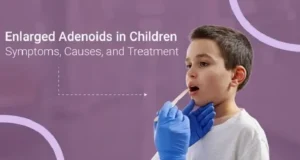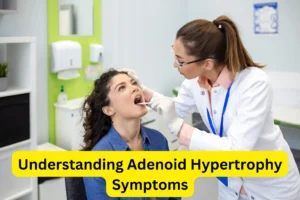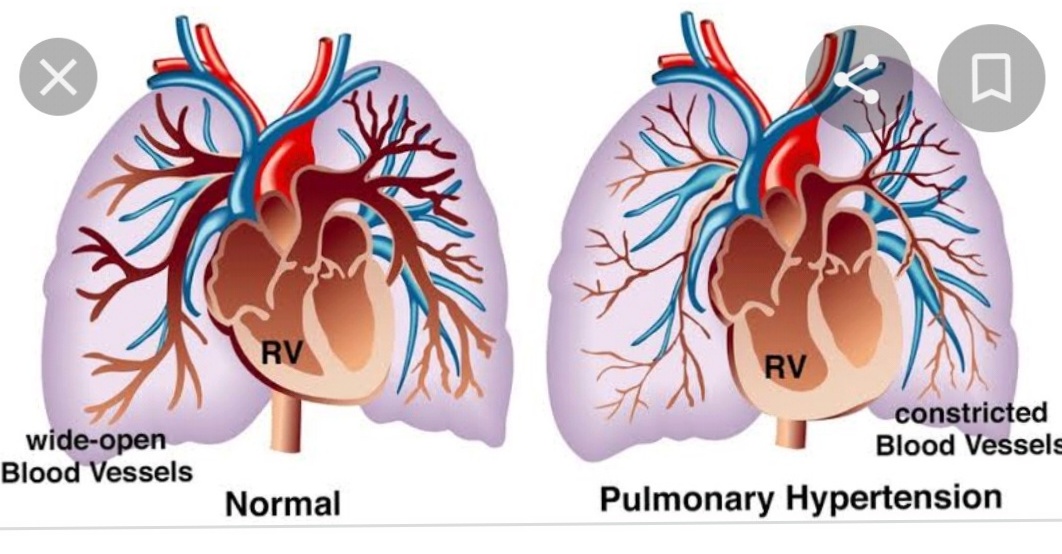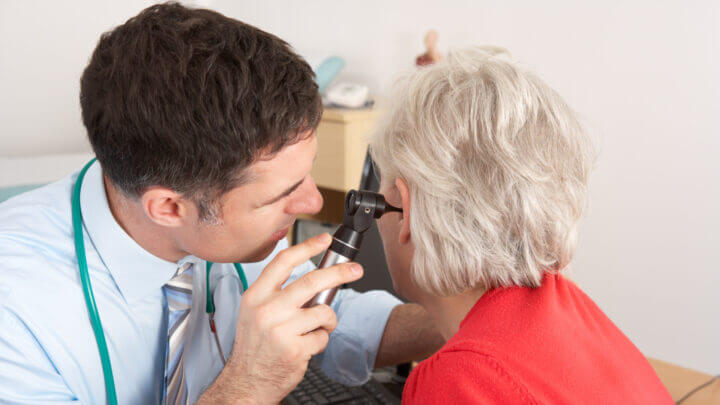“Enlarged Adenoids in Children: Symptoms That Look Harmless But Aren’t”
-by ENT specialist doctor-Dr Sagar Rajkuwar, Nashik ,Maharashtra ,India -clinic website-
www.entspecialistinnashik.com
Table of contents-
- Introduction
- What Causes Enlarged Adenoids?
- What are the symptoms and indicators of hypertrophic adenoids?
- What methods are used to identify enlarged adenoids?
- Before the Adenoidectomy, What Happens?
- During the adenoidectomy, what occurs?
- Summary
- References-
Introduction
Even though many parents believe that snoring, mouth breathing, or recurring colds in children are innocuous, they can be early indicators of enlarged adenoids. Adenoids, which are found at the back of the nasal cavity, are essential for preventing infections in young children. When they get swollen, though, they can cause a variety of issues that are frequently overlooked, such as restless sleep, nasal speech, recurrent ear infections, and even changes in facial development. In this article, we will discuss the symptoms of enlarged adenoids in children that parents often overlook, the reasons why early diagnosis is important, and the therapies that are available to safeguard your child’s health and development.


Tonsil and Adenoid Surgery | Parents frequently fail to recognize signs of enlarged adenoids, such as daytime fatigue or irritability, nasal speech, difficulty breathing through the nose, mouth breathing, and loud snoring or noisy breathing. Chronic sinusitis, ear infections, and even changes to a child’s facial structure or dental alignment over time as a result of persistent mouth breathing are other possible warning signs that may be overlooked.
Adenoids are what?
The adenoids are a cluster of lymphatic tissue located at the very rear of the nasal cavity. Adenoids, like tonsils, aid in maintaining our health by trapping dangerous microorganisms and viruses that we inhale or ingest.
The adenoids (AD-eh-noyds) serve a crucial role in protecting infants and young children from infection. However, as children get older and their bodies acquire additional defenses against germs, they become less important. Adenoids typically start to decrease in children around the age of five and are frequently almost gone by adolescence.
What Causes Enlarged Adenoids?
Adenoid tissue occasionally enlarges as it tries to combat an infection because adenoids trap germs that enter the body. They can also grow in size as a result of allergies.
Sometimes the edema gets better. Sometimes, the adenoids become infected, a condition known as adenoiditis. If this occurs often, the doctor may advise having them removed. Although it is not always the case, the tonsils and adenoids may be taken out simultaneously.
What are the symptoms and indicators of hypertrophic adenoids?
Children with enlarged adenoids may:
- have difficulty breathing via the nose
- take a breath via the mouth (which may cause a dry mouth and lips)
- speak as if their nose is pinched
- have noisy breathing (sometimes referred to as “Darth Vader” breathing)
- has foul breath
- snoring
- obstructive sleep apnea, in which a person momentarily ceases breathing while sleeping, can result in poor sleep. This might result in issues with learning, behavior, development, the heart, and even bedwetting.
- experience recurrent or persistent (long-lasting) sinus or nasal infections
- have ear infections, fluid in the middle ear, and hearing loss


Frequent Signs That Are Missed:
Mouth Breathing and Nasal Obstruction:
A stuffy nose is typical, but constant mouth breathing, particularly during sleep, is a major sign.
Problems with Sleep:
Snoring and pauses in breathing during sleep (obstructive sleep apnea) are frequently overlooked, which results in daytime fatigue and irritability.
Nasal Congestion and Speech:
A “nasal” or “pinched” voice quality, which may give the impression that the youngster has a cold, can be ignored as a persistent blocked nose.
Behavior and Daytime Fatigue:
Children who don’t get enough sleep may be restless, irritable, or have difficulties focusing during the day, rather than looking tired.
Less Obvious or Long-Term Signs:
- Chronic Ear and Sinus Infections: Recurring middle ear fluid and infections, which can impair hearing, are caused by enlarged adenoids blocking the eustachian tubes.
- Changes in the Face and Teeth: Excessive mouth breathing can impair a child’s facial development, resulting in an open bite, crowded teeth, and a long, thin face.
- Obstacle Ingestion: Huge adenoids can occasionally make swallowing difficult.
What methods are used to identify enlarged adenoids?
The physician can feel the neck along the jaw and then examine the child’s ears, nose, and throat. The doctor may prescribe X-rays or use a small telescope to examine the nasal passageway in order to get a very close view.
Doctors may prescribe various types of medication, such as tablets or liquids, if they suspect an illness. They may also advise using nasal steroids, which are liquids that are sprayed into the nose, to help reduce inflammation in the adenoids.
An Adenoidectomy: What is it?


The surgical excision of the adenoids is known as an adenoidectomy (ad-eh-noy-DEK-teh-me). Along with having tonsils removed, it is one of the most prevalent surgical operations performed on children.
When enlarged adenoids are a problem for a youngster and medication doesn’t help, a medical professional may advise an adenoidectomy.
Before the Adenoidectomy, What Happens?
Before the procedure, a youngster with obstructive sleep apnea may require an X–ray or a sleep study (polysomnogram). This enables physicians to assess the degree of nasal congestion. An ear, nose, and throat (ENT) specialist may examine the interior of the nose using a light or camera.
In the week or two prior to the procedure, your healthcare practitioner will advise you whether or not your kid should discontinue any medications. Additionally, you will find out what and when your youngster may eat and drink prior to the procedure, as the stomach needs to be empty on the day of the adenoidectomy.
Talk to your youngster about what to expect during the adenoidectomy to help them get ready.
During the adenoidectomy, what occurs?
The procedure will be performed in an operating room by an ENT surgeon. Your kid will be given general anesthesia. They will be under the close supervision of an anesthesiologist, who will make sure they are kept in a safe and comfortable sleep throughout the operation.
The procedure is performed through a child’s open mouth; there are no incisions through the skin and no obvious scars.
Is it possible for me to stay with my kid while they have their adenoids removed?
You can typically remain with your kid up until right before the operation. After it’s over, you’ll be with them again when they wake up.
What Happens Following the Adenoidectomy?
The recuperation room is where your kid will awaken. In most instances, children are able to return home the same day as the treatment. It could be necessary for some patients to spend the night for observation.
Following an adenoidectomy, it’s normal to experience a few days of minor discomfort and pain, which may include bad breath, noisy breathing, a runny nose, or a sore throat.
The issues brought on by the adenoids should be gone and everything should be back to normal in less than a week following the procedure. The adenoid region will heal on its own, and there are no stitches to be concerned about.
Is an adenoidectomy dangerous in any way?
An adenoidectomy has few significant negative effects or issues for the majority of youngsters. However, all surgical procedures have risks, such as bleeding, infection, and anesthetic issues. Before the procedure, discuss its risks and benefits with your child’s physician.
What may I do to make my youngster feel better?
Give your kid pain medication in accordance with the instructions from your healthcare professional.
Provide plenty to drink. Although the majority of children are able to eat and drink normally a few hours after surgery, you may begin with soft foods such as pudding, soup, gelatin, or mashed potatoes.
For a few days following the procedure, children should take it easy. After surgery, adhere to the care team’s recommendations on your child’s activities for the next week or so, as well as on when it’s acceptable to return to school or daycare.
A cold-mist humidifier may help alleviate a blocked nose in your kid. To avoid the development of mold, clean the humidifier every day.
When Should I Give the Doctor a Call?
Get in touch with the doctor if your youngster:
- gets a fever
- vomits after the first day or after taking medication
- suffers from neck pain or stiffness that is unresponsive to pain medication
- having difficulty moving the neck
- rejects drinking
At the very least, isn’t it necessary to urinate once every eight hours?
If your child has any of the following symptoms, seek medical attention immediately:
- has blood dripping from the nose or covering the tongue for over 10 minutes
- bleeds following the first day
- vomits blood or anything that resembles coffee grounds
What to Do If You Think Your Adenoids Are Enlarged:
See a Pediatrician or an ENT Specialist:
It’s crucial to seek a professional examination if you experience a number of these symptoms, particularly recurrent infections or sleep problems.
If any patient has any ENT -Ear nose throat problems and requires any , consultation ,online consultation ,or surgery in clinic of ENT specialist Doctor Dr Sagar Rajkuwar ,he may TAKE APPOINTMENT BY CLICKING ON THE LINK GIVEN BELOW-
Clinic address of ENT SPECIALIST doctor Dr Sagar Rajkuwar-
Prabha ENT clinic, plot no 345,Saigram colony, opposite Indoline furniture Ambad link road ,Ambad ,1 km from Pathardi phata Nashik ,422010 ,Maharashtra, India-Dr Sagar Rajkuwar (MS-ENT), Cell no- 7387590194 , 9892596635
Keep an eye on your symptoms:
To give the physician a more thorough picture of your child’s symptoms, keep a diary of them.
What More Do I Need to Know?
Removing the adenoids has no impact on the body’s capacity to fight infections, even if they are a component of the immune system. The immune system uses a variety of additional strategies to combat pathogens.
DISCLAIMER-Some patients go to net and directly take treatment from there which can lead to catastrophic consequences-Then- Many people ask then why to read all this text -the reason is that it helps you to understand the pathology better ,you can cooperate with treatment better ,your treating physician is already busy with his patients and he does not have sufficient time to explain you all the things right from ABCD ,so it is always better to have some knowledge of the disease /disorder you are suffering from.
Summary
Symptoms of enlarged adenoids in children, such as mouth breathing, snoring, daytime fatigue, and irritability, are frequently overlooked because they are mistaken for minor problems. They can cause chronic ear and sinus infections, sleep apnea, hearing issues, and perhaps even alterations in the development of the face or teeth if left untreated. This guide explains what adenoids are, why they grow, typical symptoms that parents overlook, how doctors diagnose the problem, and when an adenoidectomy is advised. It also addresses potential hazards, recovery recommendations, what to anticipate before, during, and after surgery, and when to get immediate medical assistance. If you identify the warning signals early and seek advice from an ENT specialist, you may improve your child’s health and quality of life as well as avoid potential long-term issues.
References-
This article is written as per the clinical experience of ENT Specialist doctor -Dr Sagar Rajkuwar(MS-ENT) ,Nashik Maharashtra -Clinic website-www.entspecialistinnashik.com References taken from-
https://kidshealth.org/en/parents/adenoids.html
For link on you tube video on -Enlarged Adenoids in Kids: Symptoms Parents Miss please click on the link given below-






